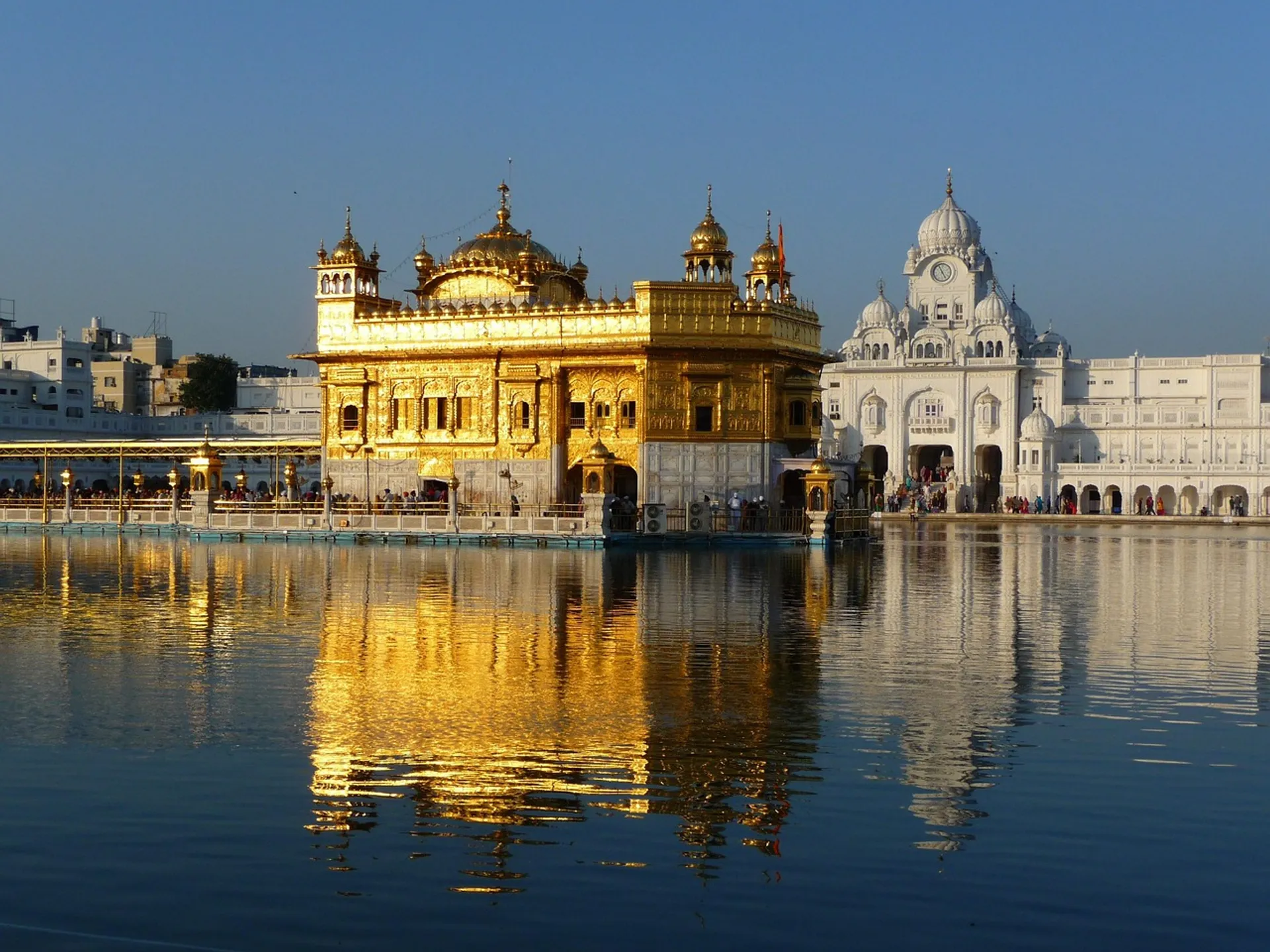
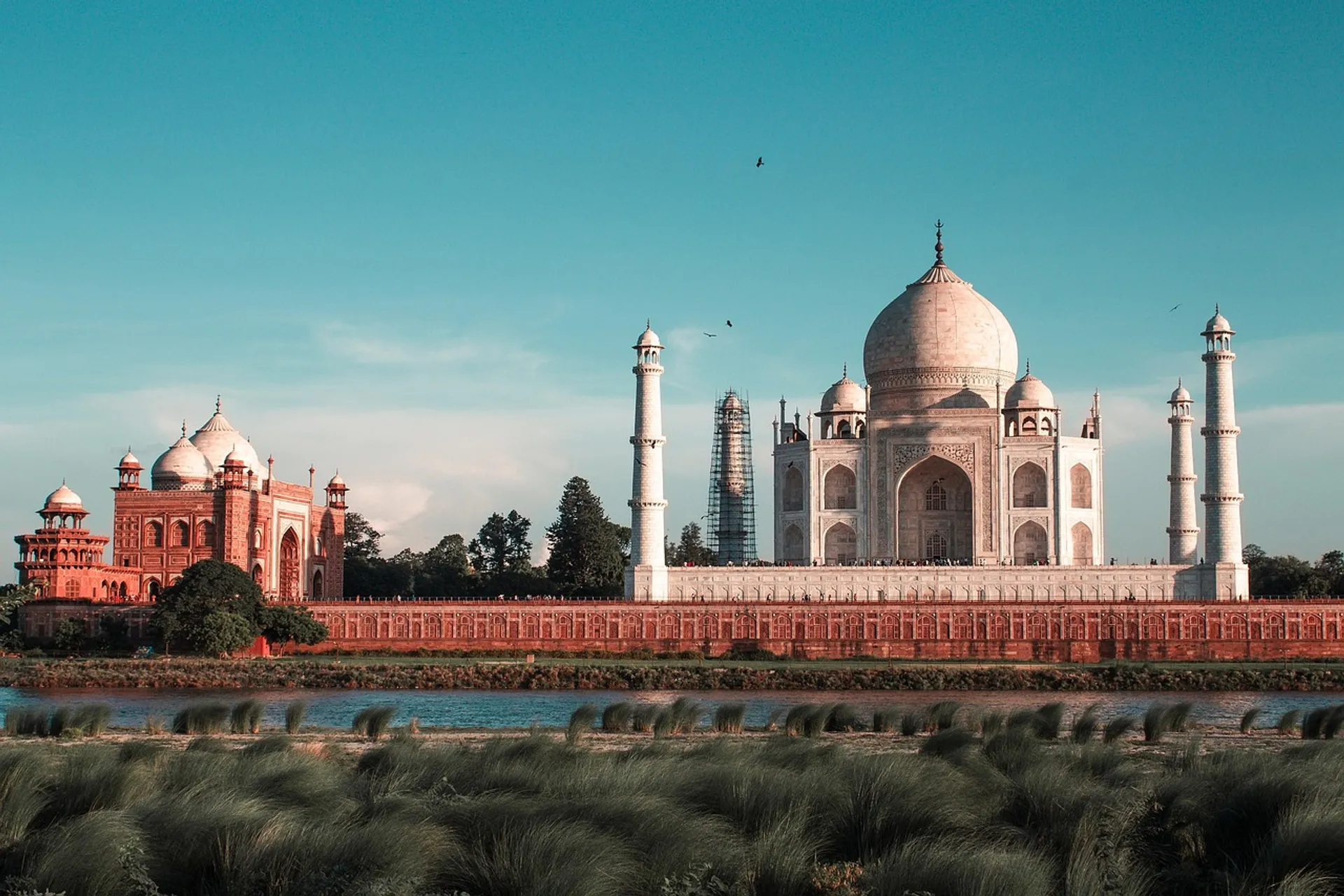

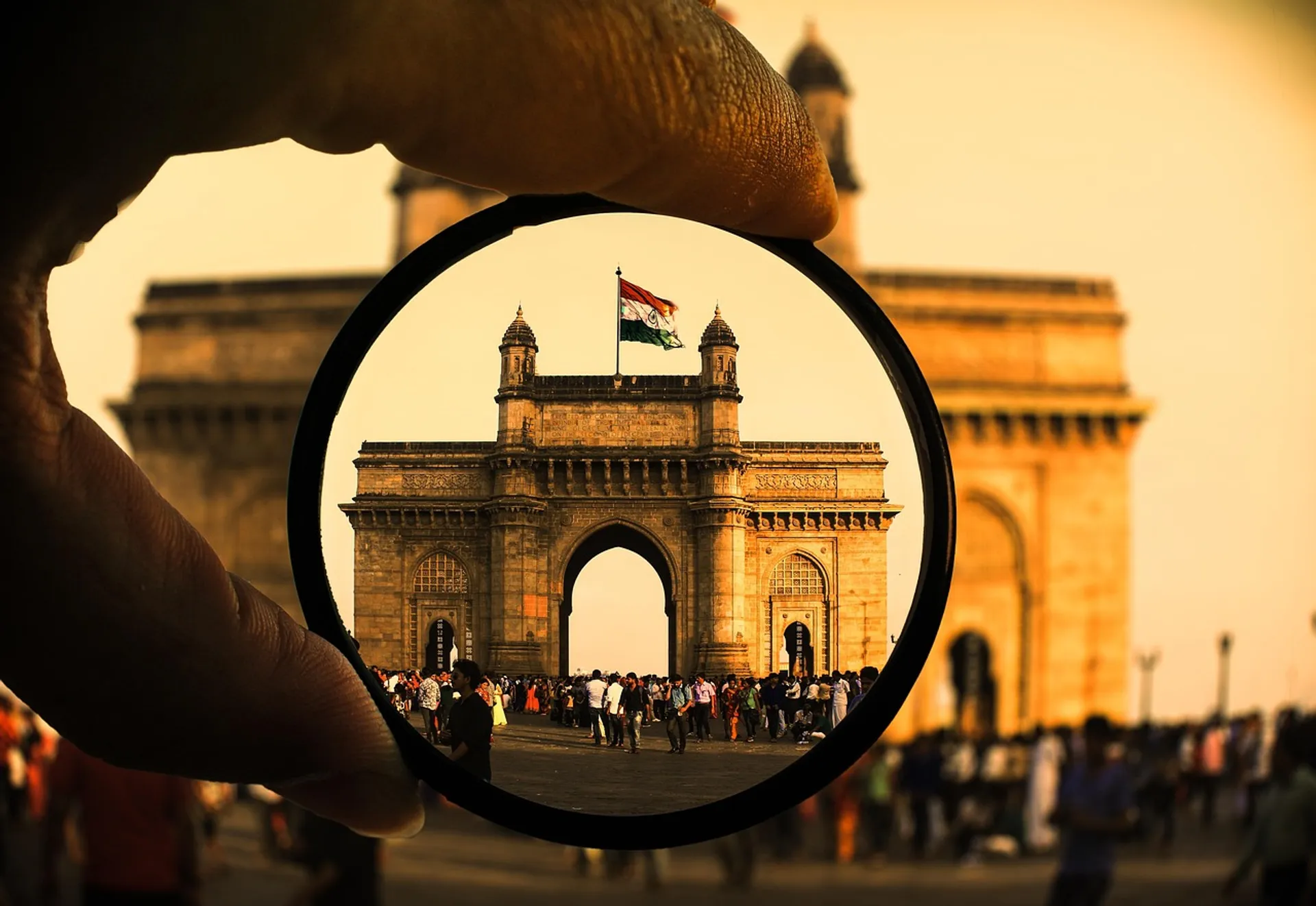
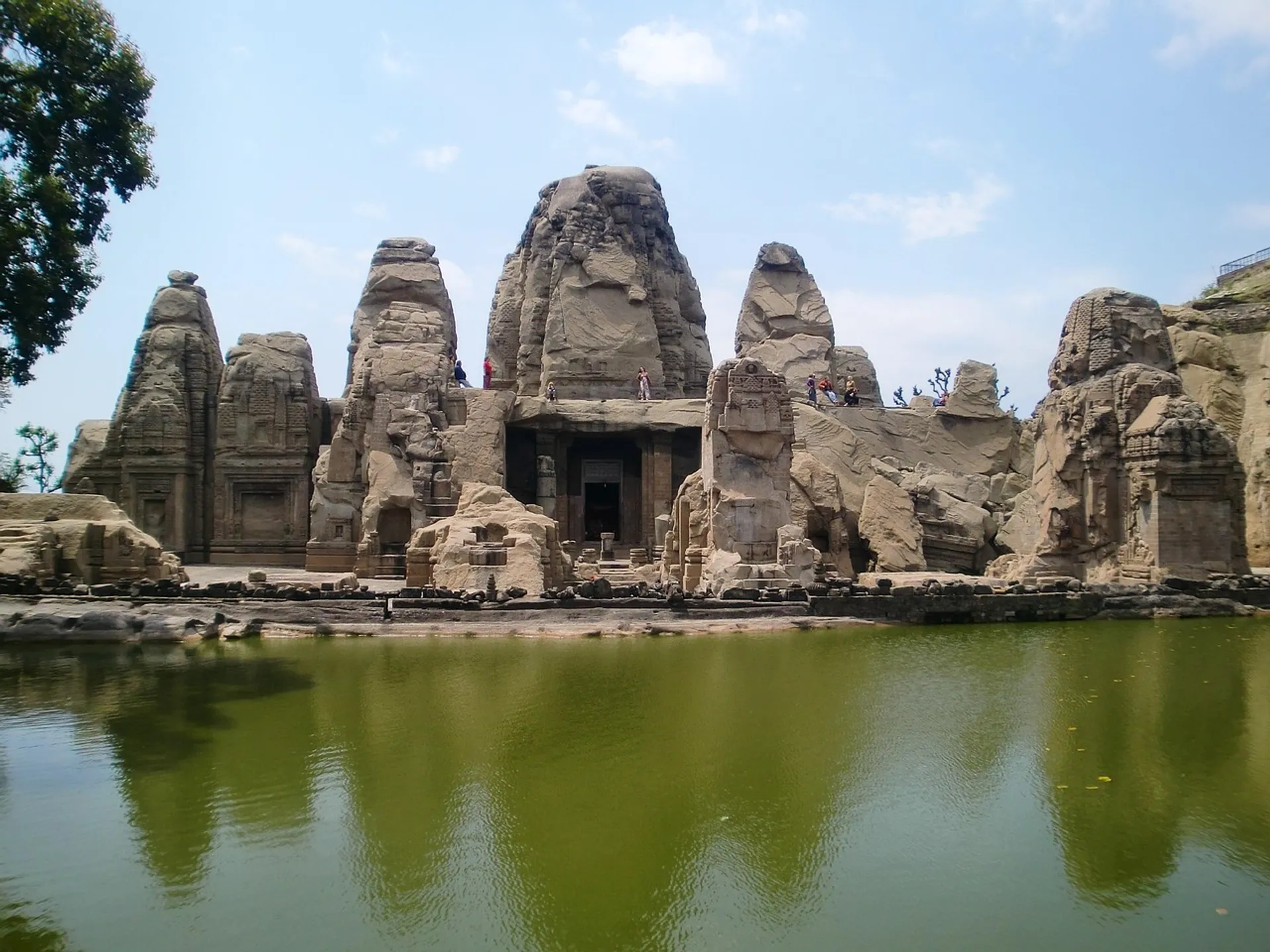
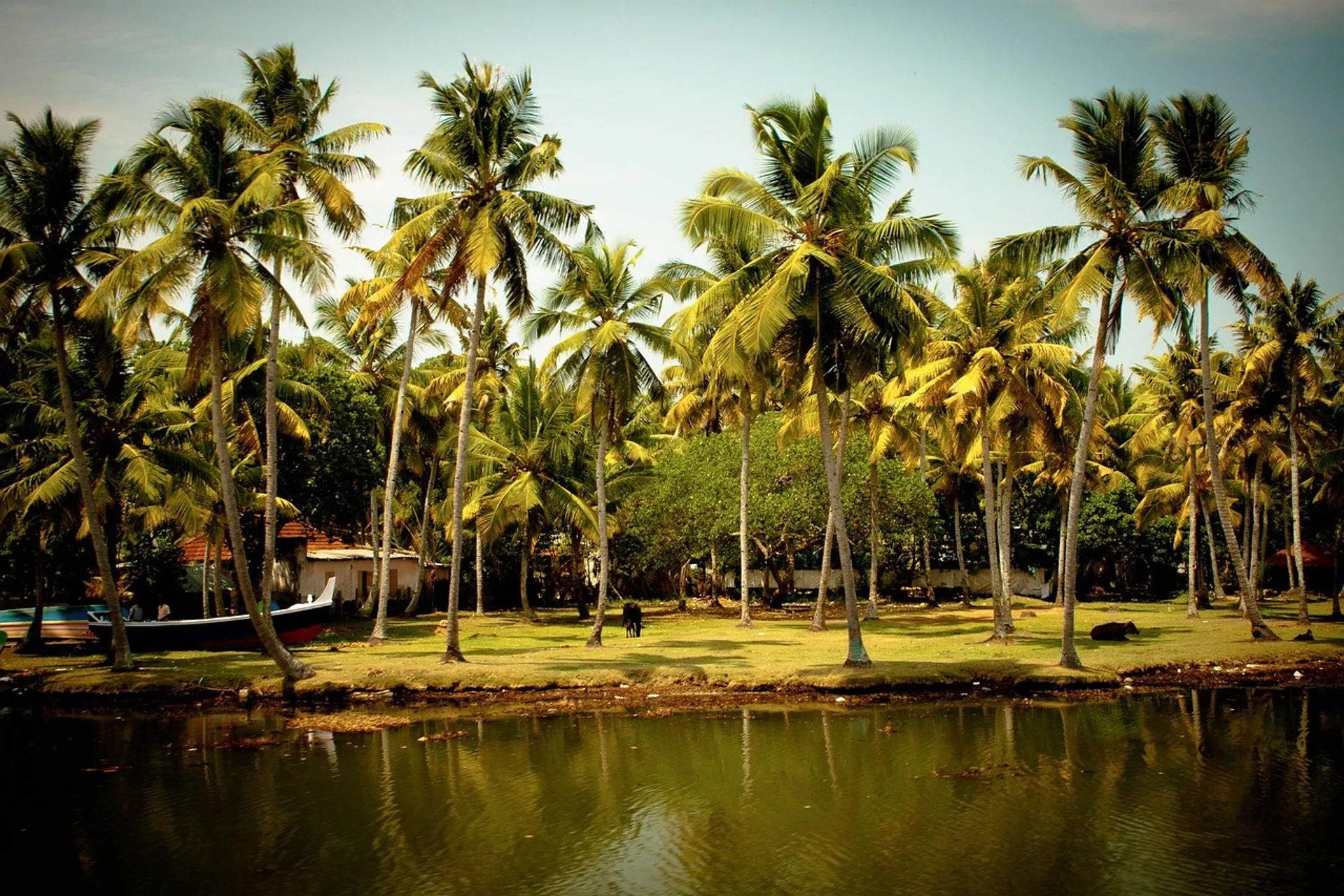
india visa for australian
Select Visa Type
180 Days multiple Entry
Tourist e-Visa
multiple Entry
Validity 365 Days
Stay 180 Days
Get on
12 Oct 2025
30 Days single Entry
Tourist e-Visa
single Entry
Validity 30 Days
Stay 30 Days
Get on
12 Oct 2025
india Visa Requirements
Photo
Passport
How india Visa Process Works
Step 1: Apply with MyVisitVisa
fill details & upload required documents via MyVisitVisa.
Step 2: Documents Verification
Your documents will Verified by our advisor. We will contact you if any further information required.
Step 3: Your Visa Gets Processed
eVisa Process
- We will submit your documents to the immigration department.
Embassy visa Process
- visa advisor will be assigned to your Application and assist with your Application and appointment booking.
- Attend visa appointment.
- Submit visa appointment to the immigration.
Step 4: Get Your Approved Visa on
You will receive an email notification of your visa approval and you can download from your MyVisitVisa account.
Reviews & Ratings
4.6/5
Based on 21 reviews
5
100%
4
0%
3
0%
2
0%
1
0%
On Time
Easy
Fast
Reliable
TrustWorthy
Cherrice Blizzard
australia
Immigration site had crashed
I had read on FB that the immigration site had crashed and there were continual issues when i wanted to do my 60 visa. I contacted Visa Centre Au and they processed my visa, no stress, no issues, simple process. I was even able to ring them to discuss my concerns. Thank you Visa Centre Au 🙏 😊

Amisha Dahal
australia
Got visa within a week
Got visa within a week. Very helpful. I will definitely recommend to others as well.

Prashansha Karki
australia
Fast and easy service
Fast and easy service, got a visa in couple of hours. Highly recommended!!

Soney S
australia
Reliable and great service
Very satisfied with the customer service provided recently as the visa was granted within a week. Highly recommended visa service centre if you looking for a professional, trustworthy, reliable, and responsive provider, who helps with your processing overall and clears all your queries with quick responses and great support👍Thankful to Mr Prem, you have been a great help.
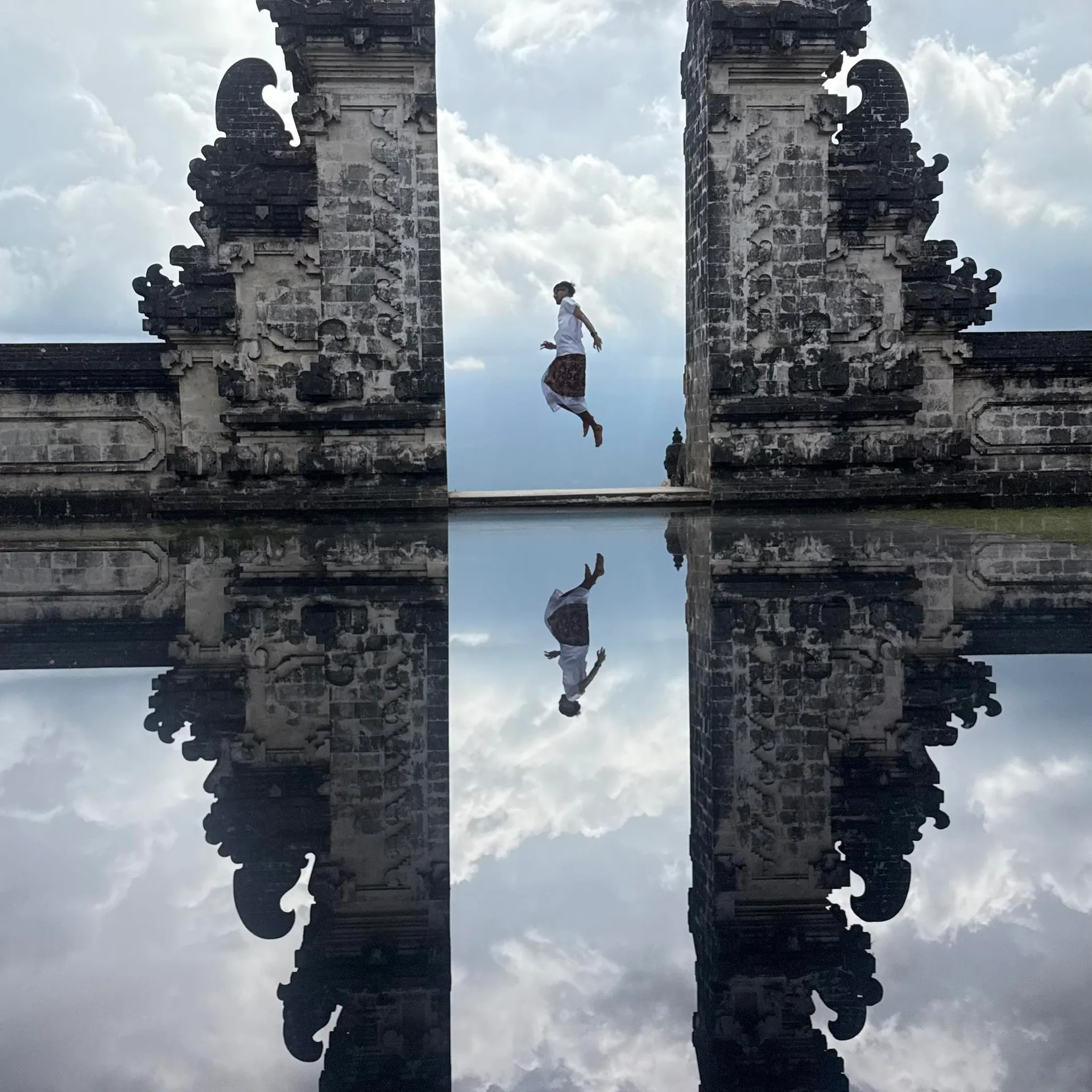
Sujan Khatri
nepal
Great staff and easy process
Had a great experience with Visa Centre AU, the process was easier and the team was very responsive and giving me update on each part of the application. Love the service.
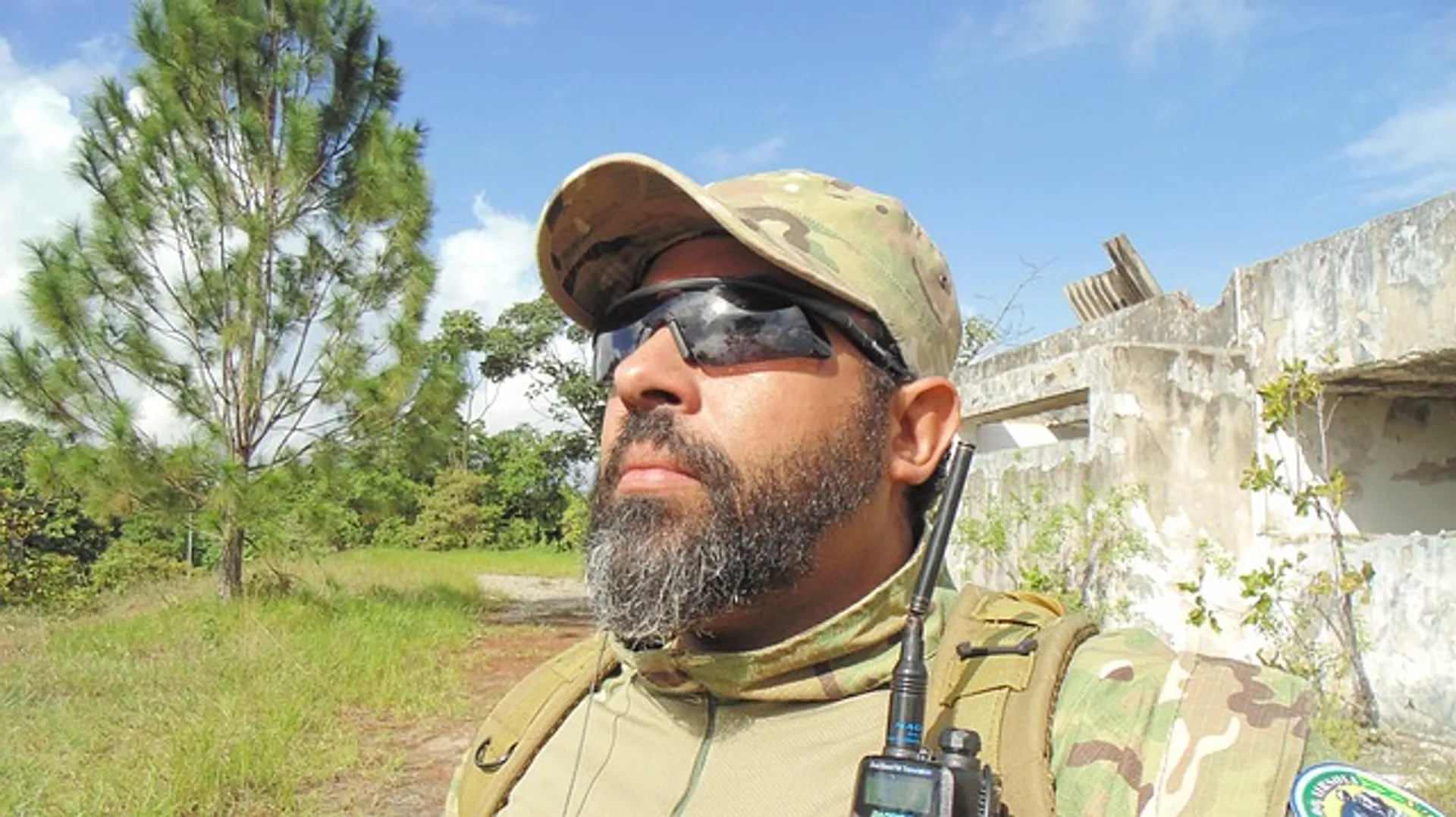
Sujan Paudel
australia
Thanks so much to Visa centre Au team…
Thanks so much to Visa centre Au team for all the help. Applying visa from them was really easy and they helped me every step of the way guiding me. My overall experience with the team was amazing and i highly recommend working with them.

Sunita Maharjan
nepal
Easily approachable and very reliable.
Easily approachable and very reliable.

Osama Ahmed Khan
pakistan
Very professional
Very professional Applied visa on 19th and received a day after on 21th Well satisfied 🥰🥰
Alina Chauhan
australia
Very helpful and professional team
Very helpful and professional team. Highly recommended.
Madhu Limbu
australia
Friendly and Convenient
Friendly support. All we had to do was provide the pics of our documents. Very convenient
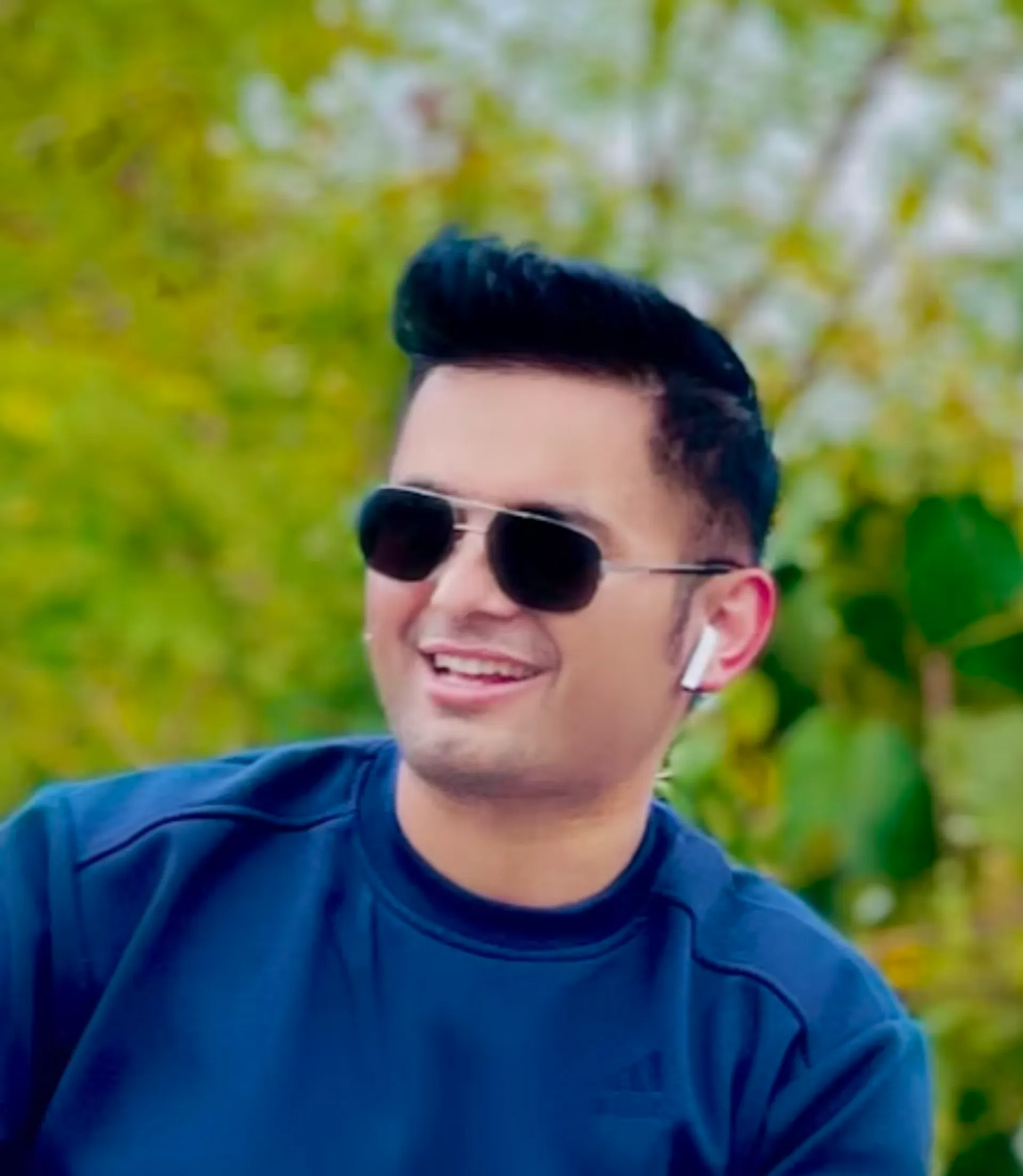
Nishant Shrestha
nepal
Very Professional
Thank u so much visa centre AU for being so much helpful n understanding in every step of our visa process for thailand. I m very much pleased with ur effort and service. I am very much happy from ur service n Il be recommending my friends n family for choosing ur center. Thank u😍😊😊

Hawraa S
australia
I was in a tight situation but with…
I was in a tight situation but with visa centre he made my life easier Best team I've worked with Deserved the 5 stars

Roshani Thapa
australia
I want to thank visa centre Au for…
I want to thank visa centre Au for exceptional performance for solving visa issues . Greatly appreciate what you have done for me . I am grateful for ur valuable advice .most important is thank you for supporting us during crisis situations. Truly grateful for valuable service and emotional support.

kamal maharan
australia
Thank you for making my life easy
Thank you for making my life easy. As promised Bali visa in 2 days. Best in the business. Very much genuine, they are there to help people and make our life easy while traveling...really great service...once again thank you guys so so much.
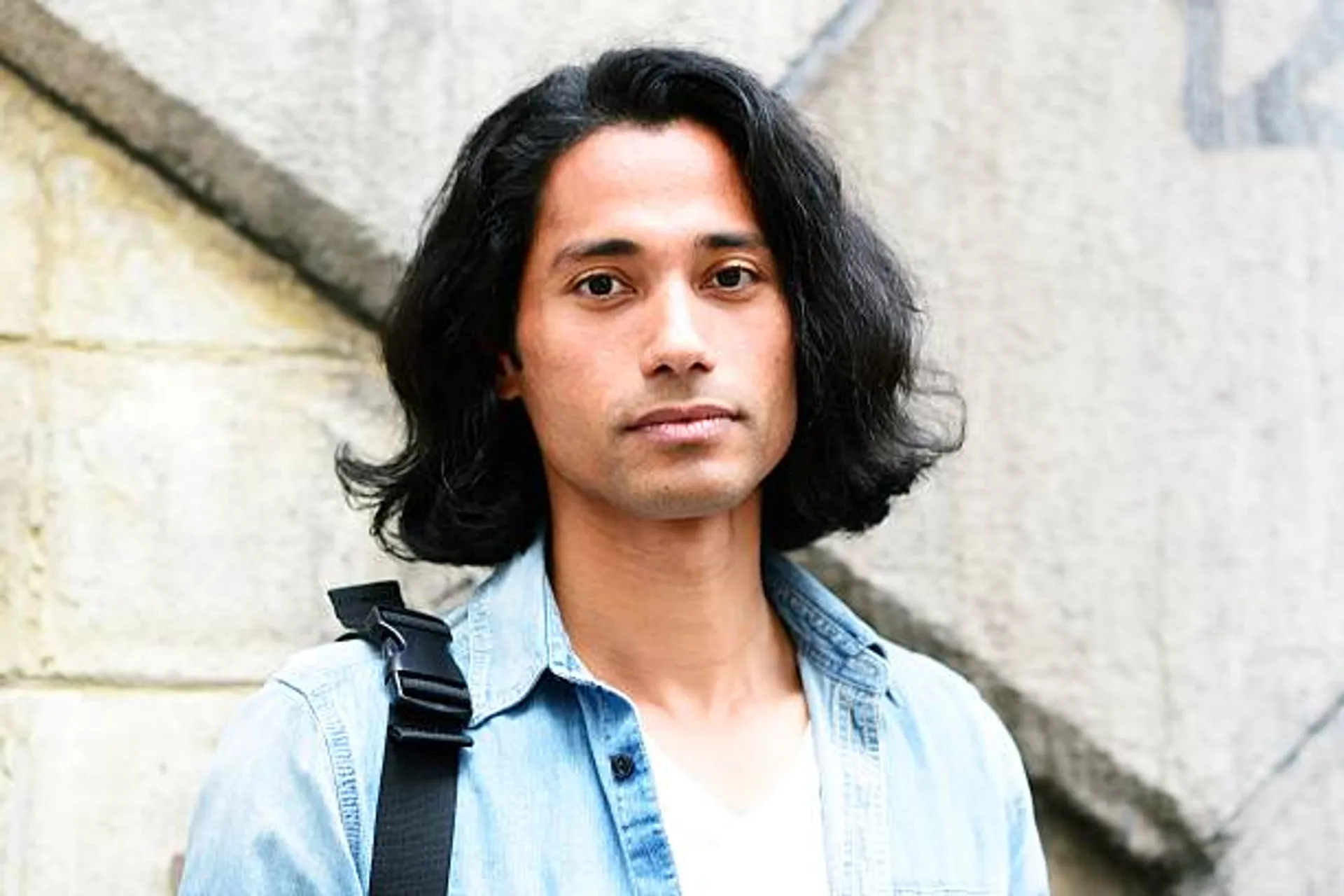
Sunny Shrestha
australia
Visa granted in 4 days
I recently applied for a Japan visa through the Visa Centre, and I’m very pleased with the experience. The process was smooth, efficient, and professionally handled. My visa was granted without any issues. Highly recommend their service!

Manik Guragain
thailand
I booked a longtail boat to Phi Phi
I booked a longtail boat to Phi Phi Island through Visa Centre AU, and honestly, it was one of the best decisions I made on my trip. The entire experience—from booking to the actual tour—was smooth and hassle-free. The water was crystal clear, the views were straight out of a postcard, and the peaceful ride on the longtail boat made it feel like a private escape to paradise. Big thanks to the team for their quick response and friendly service. They made everything so easy. If you’re planning a trip to Thailand and want something truly special, I highly recommend booking through them. I’ll 100% be reaching out again for my next adventure. Don’t miss this—it’s worth every cent!
india Visa Rejection Reasons
Factors than can get your visa rejected
Expired Passport
Applying with a passport that has expired or expires within 6 months.
Insufficient Funds
Failing to demonstrate enough financial resources to support your stay.
Criminal Record
Having a criminal history that disqualifies you from obtaining a visa.
Previous Visa Violations
Having overstayed or violated the terms of a previous visa.
Frequently Asked Questions
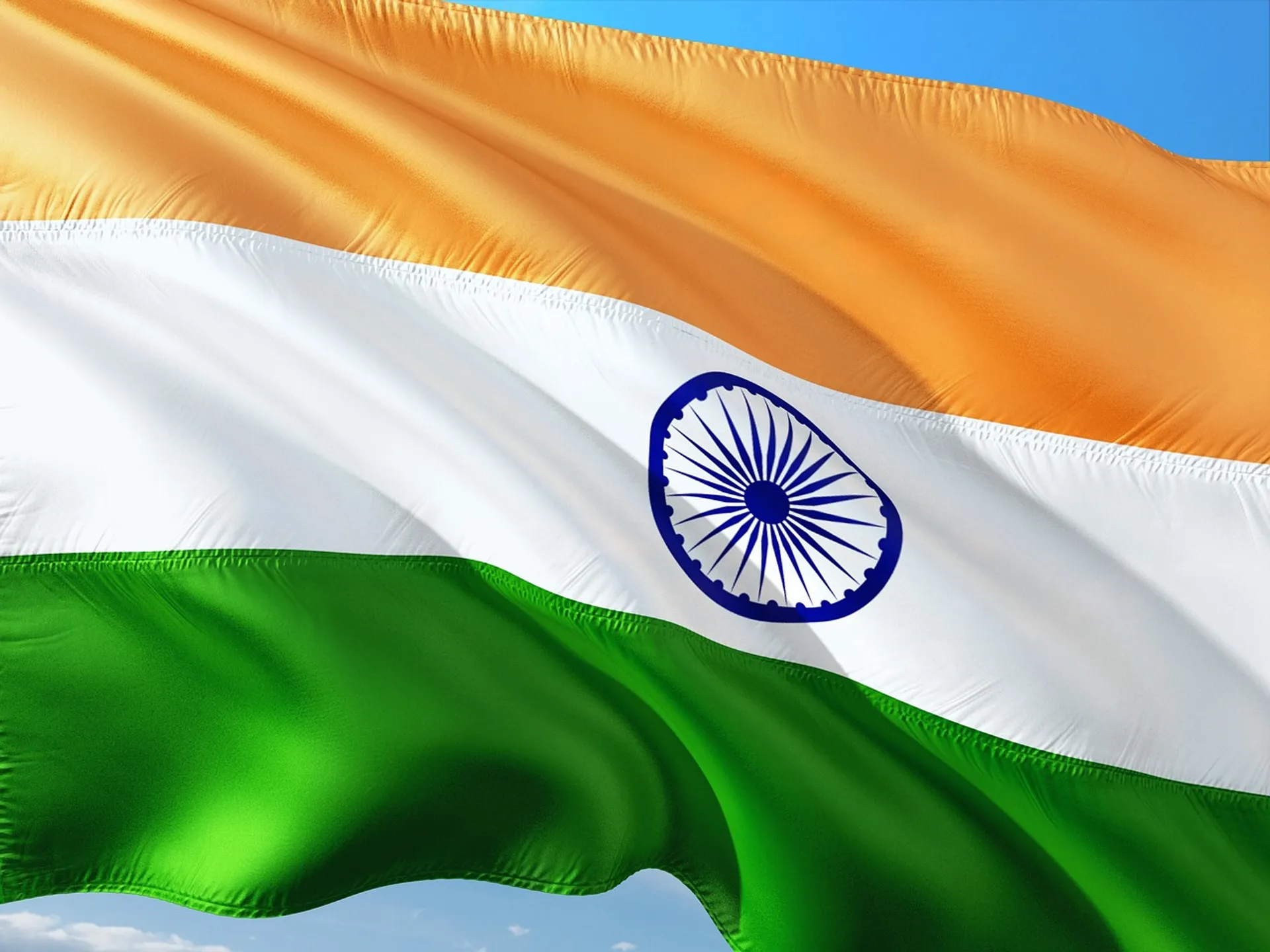
India Tourist Visa: An Essential Guide for Travellers
India, a nation of unparalleled cultural heritage, breathtaking landscapes, and vibrant traditions, draws millions of travellers each year. For nearly all foreign nationals, a valid visa is a mandatory prerequisite for entry into the country. The only notable exceptions are citizens of Nepal and Bhutan, who are permitted entry under specific, limited circumstances. A successful journey to India hinges on a correctly processed visa, which is the foundational step for any travel itinerary. Understanding the distinct pathways available for obtaining a visa is paramount to ensuring a seamless and stress-free experience.
Understanding the India Tourist Visa: e-Visa vs. Regular Visa
The Government of India provides two primary channels for foreign nationals to obtain a tourist visa: the e-Visa, which functions as an Electronic Travel Authorisation (ETA), and the traditional, or "Regular," Visa. While both serve the same ultimate purpose, their application processes, requirements, and management are entirely separate. The e-Visa is processed through a completely online system, managed directly by the Ministry of Home Affairs in New Delhi. In contrast, the regular visa application is handled by official outsourcing service providers, most notably VFS Global, which works in conjunction with Indian Embassies and Consulates abroad.
The distinction between these two systems is not a matter of choice but a crucial operational division. Consular offices, whether in Chicago, Washington D.C., or Paris, explicitly state that they do not process e-visas and that all enquiries for them must be directed to the dedicated e-visa portal. This operational split is a deliberate strategic measure by the Government of India. The e-visa system is designed to handle high-volume, low-complexity applications for purposes such as tourism and casual business, using a centralised, automated framework. This allows Indian diplomatic missions and their outsourcing partners to focus on more complex, in-person applications that may require biometrics and a more thorough review, such as student or employment visas. Failing to understand this fundamental separation can lead to significant delays or even application rejection. For example, a traveller attempting to get an e-visa-related question answered at a VFS Global centre will find the staff unable to assist, as the centres have no administrative or technical connection to the e-visa portal. This highlights the importance of choosing the correct application channel from the very beginning.
The Digital Journey: A Step-by-Step Guide to the India E-Visa
The e-Visa system offers a compelling advantage for eligible travellers due to its convenience and speed. The entire process is conducted online, eliminating the need for in-person visits to an embassy or visa application centre. This has revolutionised how travellers prepare for their trips, allowing them to apply for travel authorisation from the comfort of their homes at any time of day.
Official India Visa Portal
A critical point of awareness for all applicants is the existence of only one authorised website for the India e-visa: https://indianvisaonline.gov.in/evisa/tvoa.html. Official government sources consistently and emphatically warn travellers against using any other fraudulent websites that may appear to represent the Government of India. These unofficial sites often mimic the official portal, but can charge exorbitant fees, provide inaccurate information, and potentially compromise personal data. The traveller who unknowingly uses one of these sites risks not only financial loss from inflated charges but also the rejection of their application due to a flawed process, losing valuable time and effort. The prevalence of these scam sites necessitates extreme caution and underscores the importance of verifying the URL before beginning any application.
Step-by-Step Application Process: From Form to Final ETA
The application process itself is a meticulous, form-based journey. Applicants are required to provide a wide range of personal information, including their full name, date of birth, town and country of birth, religion, educational qualifications, and any visible identification marks. The application also requires detailed passport information, contact and address details, and family history, including the names and nationalities of parents. A particularly sensitive question concerns whether a grandparent was ever a Pakistani national. Applicants must also provide their travel details, including the expected date of arrival, the port of entry, and a list of countries visited in the past ten years.
Document and Photo Specifications
The fate of an e-visa application largely depends on the accuracy of the information provided and the quality of the uploaded documents. Two mandatory documents must be uploaded: a recent passport-style photo and a scanned copy of the passport's identification page. The specifications for these are non-negotiable and a common reason for application rejection.
- Digital Photograph: The photo must be a recent, full-face, frontal view of the applicant against a plain white background. It should be in JPEG format, with dimensions and file size strictly adhering to the specified range (minimum 10 KB, maximum 300 KB). The photo must not feature glasses, shadows on the face or background, or any borders.
- Passport: The passport's ID page, showing personal details, must be scanned and uploaded as a PDF file. The passport must be valid for at least six months from the date of arrival in India and must have at least two blank pages for immigration stamps.
e-Visa Types and Processing Times
The e-visa facility is available for several sub-categories, including e-Tourist, e-Business, e-Medical, and e-Conference visas. The e-Tourist visa offers different validities: a 30-day visa (with a double-entry allowance), a one-year visa, and a five-year visa (both with multiple-entry privileges).
Applicants can apply online at least four days in advance of their date of arrival, with a 120-day window for applying for one- or five-year visas. While applications can sometimes be processed in as little as 24 to 48 hours, it is prudent to allow at least a week for processing to account for any unexpected delays. A key point of confusion for the 30-day visa is that its validity period begins from the date of visa issuance, not the date of arrival. Therefore, a traveller who applies too early or experiences a flight delay could arrive with a visa that has already expired.
India Tourist Visa Costs: A Transparent Look at Visa Fees
The total cost of an Indian visa is a multi-component fee structure that goes beyond the single visa fee set by the Government of India. The overall expense is a sum of the government's visa fee, the Indian Community Welfare Fund (ICWF) charge, VFS Global's mandatory service fees, and any optional, value-added services selected by the applicant.
India E-Visa Fees by Validity and Season
The e-visa fee structure is tiered and varies based on the visa validity and the season of travel. The payment is processed online, with an additional 2.5% bank transaction charge. These fees are for the processing of the application and are non-refundable, regardless of whether the visa is granted or rejected.
| Visa Validity | Fee (USD) |
| 30-day e-Tourist Visa (April to June) | $10.00 |
| 30-day e-Tourist Visa (July to March) | $25.00 |
| One-year e-Tourist Visa | $40.00 |
| Five-year e-Tourist Visa | $80.00 |
Regular Visa Fees: A Snapshot by Nationality
The cost for a regular visa varies significantly by the applicant's nationality. In addition to the government-mandated visa fees, a VFS service charge is levied, which can be a significant, mandatory portion of the total cost. The mandatory nature of this fee, as confirmed by outsourcing agencies handling visa applications for other countries, means it cannot be waived or avoided. A traveller who only accounts for the government's fee will encounter a higher-than-expected total cost when it is time to pay.
For example, a US national applying for a regular tourist visa valid for up to 10 years would pay a visa fee of $95 plus a $3 ICWF fee, along with additional VFS service charges and other optional fees.
Visa Categories by Country
Most foreign nationals require a visa to enter India. However, the type of visa and the application process can differ significantly based on nationality and travel purpose. Here is a breakdown of the requirements for different categories of travellers.
Nationals that receive Visa on Arrival (VoA) while travelling to India
A genuine Visa on Arrival facility is available exclusively to nationals of a select few countries under specific bilateral agreements. This facility is provided at only six designated international airports: Bangalore, Chennai, Delhi, Hyderabad, Kolkata, and Mumbai. For nationals of these countries, the VoA is a double-entry visa valid for up to 60 days.
- Japan
- South Korea
- United Arab Emirates
E-Visa (Electronic Travel Authorisation)
The e-visa is a pre-approved Electronic Travel Authorisation that must be secured before a traveller embarks on their journey. It is available to citizens of a large number of countries, including but not limited to:
- Albania, Andorra, Angola, Anguilla, Antigua & Barbuda, Argentina, Armenia, Aruba, Australia, Austria, Azerbaijan
- Bahamas, Barbados, Belarus, Belgium, Belize, Benin, Bolivia, Bosnia & Herzegovina, Botswana, Brazil, Brunei, Bulgaria, Burundi
- Cambodia, Canada, Cape Verde, Cayman Island, Chile, China, Colombia, Comoros, Cook Islands, Costa Rica, Côte d’Ivoire, Croatia, Cuba, Cyprus, Czech Republic
- Denmark, Djibouti, Dominica, Dominican Republic
- Ecuador, El Salvador, Eritrea, Estonia
- Fiji, Finland, France
- Gabon, Gambia, Georgia, Germany, Ghana, Greece, Grenada, Guatemala, Guinea, Guyana
- Haiti, Honduras, Hungary
- Iceland, Indonesia, Iran, Ireland, Israel, Italy
- Jamaica, Japan, Jordan
- Kazakhstan, Kenya, Kiribati, Kyrgyzstan, Laos, Latvia, Lesotho, Liberia, Liechtenstein, Lithuania, Luxembourg
- Macau, Madagascar, Malawi, Malaysia, Maldives, Mali, Malta, Marshall Islands, Mauritius, Mexico, Micronesia, Moldova, Monaco, Mongolia, Montenegro, Montserrat, Mozambique, Myanmar
- Namibia, Nauru, Nepal, Netherlands, New Zealand, Nicaragua, Niger, Niue Island, Norway
- Oman
- Palestine, Panama, Papua New Guinea, Paraguay, Peru, Philippines, Poland, Portugal
- Qatar
- Republic of Korea (South Korea), Republic of Macedonia, Romania, Russia, Rwanda
- Saint Christopher and Nevis, Saint Lucia, Saint Vincent and the Grenadines, Samoa, San Marino, Saudi Arabia, Senegal, Serbia, Seychelles, Sierra Leone, Singapore, Slovakia, Slovenia, Solomon Islands, South Africa, Spain, Sri Lanka, Suriname, Swaziland, Sweden, Switzerland
- Taiwan, Tajikistan, Tanzania, Thailand, Togo, Tonga, Trinidad and Tobago, Turks and Caicos Island, Tuvalu
- UAE, Uganda, Ukraine, United Kingdom, Uruguay, USA, Uzbekistan
- Vanuatu, Vatican City-Holy See, Venezuela, Vietnam
- Zambia, Zimbabwe
Regular Visa
All other foreign nationals not covered by the above categories must apply for a regular visa through the traditional channel at an Indian embassy or consulate. This is also the mandatory route for those of Pakistani origin or those holding a Pakistani passport, regardless of their current nationality. Nationals of Afghanistan, China, Iraq, and Sudan are also required to maintain a gap of at least two months between two tourist visa visits.
Avoiding the Pitfalls: Common Mistakes and Insider Tips
Navigating the visa application process, whether digital or traditional, requires attention to detail. Several common mistakes can lead to delays or outright rejection. Awareness of these pitfalls is the first step to a successful application.
- Using Unofficial Websites: As mentioned, the most significant risk is falling prey to fraudulent websites. These sites not only charge extra fees but can also misuse personal data. The only safe and correct path is to use the official Indian government portal.
- Inaccurate or Incomplete Information: Minor discrepancies between the application form and passport details, such as a misspelled name or incorrect date of birth, can result in the application being denied. This is why meticulous verification of all entered data is essential before submission.
- Disregarding Document and Photo Specifications: Applicants often fail to follow the strict requirements for photographs (e.g., incorrect background colour, wearing glasses) and document formats (e.g., wrong file type or size). An application with non-conforming photos or documents is likely to be rejected.
- Not Allowing Sufficient Time: While e-visas are processed quickly, delays are always possible. Applying too close to the travel date is a gamble that can lead to a cancelled trip. It is advisable to apply with a buffer of at least a few weeks.
- Misunderstanding Visa Validity: A 30-day e-visa's validity period begins from the date of issuance, not the date of entry. A traveller should apply with a buffer to ensure the visa is valid for the entirety of their intended stay, especially for a short-term visa.
How MyVisitVisa Can Help
The visa application process, while simplified by the e-visa system, can still be complex and daunting for many travellers. Navigating the correct application type, gathering the right documents, and avoiding common errors can be a source of significant stress. Professional visa facilitation services offer a valuable solution by streamlining the process and providing expert guidance. These services act as a trusted intermediary, offering clarity and assistance every step of the way.
MyVisitVisa positions itself as a comprehensive travel partner by addressing the specific challenges travellers face. Its services are designed to eliminate confusion, reduce the risk of rejection, and save valuable time and effort. The table below illustrates how MyVisitVisa can mitigate common problems associated with the India visa application process.
| Problem | How MyVisitVisa Can Help |
| Confusion over Visa Type | Expert consultation to identify the correct visa for a specific trip (e-Visa vs. Regular Visa) and guidance on when a traditional visa is necessary. |
| Risk of Fraudulent Websites | Provides direct, secure access to the official Indian government application portal, protecting applicants from scams and data theft. |
| Inaccurate or Incomplete Application Forms | Offers form-filling assistance and a meticulous document review service to ensure all information is accurate and complete before submission. |
| Non-conforming Photos and Documents | Provides professional review of all documents and photos, ensuring they meet the exacting standards for file format, size, and quality. |
| Delays and Uncertainty | Offers application tracking and real-time updates on the status of a visa, providing peace of mind and eliminating guesswork. |
| Hassle of Physical Appointment/Collection | Facilitates courier services for the return of passports and documents, eliminating the need for a second trip to a VFS centre. |
| General Questions and Concerns | A dedicated customer support team is available to address questions and resolve issues, serving as a single point of contact throughout the process. |
By providing these services, MyVisitVisa ensures that the visa application journey is not just a necessary formality but a smooth and reliable process.
Frequently Asked Questions (FAQ)
Application & Documents
Q: Do I need a visa to go to India?
A: Yes, almost all foreign nationals require a valid visa to enter India, with very limited exceptions for citizens of Nepal and Bhutan under specific conditions.
Q: Can I use an old passport if my visa is on it?
A: Yes, travellers can enter India on a new passport even if their e-visa was granted on an old one. However, they must carry both the old and new passports during travel.
Q: Are dual passport holders eligible for e-visa?
A: If a traveller holds dual citizenship, they can use both passports to complete the application. However, individuals of Pakistani origin or those holding a Pakistani passport are not eligible for the e-visa and must apply for a regular visa at an Indian Mission.
Fees & Payments
Q: Are visa fees refundable?
A: No, visa fees are generally non-refundable. The fee is for the processing of the application and is not contingent on the grant or rejection of the visa. VFS Global service fees and optional service fees are also non-refundable once paid.
Q: What are the bank transaction charges for e-visa?
A: An additional bank transaction charge of 2.5% is applied to the applicable e-visa fee.
Processing & Post-Approval
Q: How long does the e-visa take to process?
A: The processing time is typically a few days, though it can be as fast as 24 to 48 hours. Applicants must apply at least four days before their arrival date.
Q: How can I check the status of my application?
A: Applicants can track the status of their application online using the reference number provided on the payment receipt. The final status must show as 'GRANTED' before commencing the journey.
Q: What if my e-visa is rejected?
A: If an e-visa application is rejected, the fee is non-refundable. The applicant would then need to consider applying for a regular visa through the traditional channel.
Common Mistakes & How to Avoid Them
Q: What are the most common reasons for an application to be rejected?
A: A common pitfall is using unofficial websites that mimic the official government portal. These can charge extra fees and may provide incorrect information. Another frequent issue is supplying inaccurate or incomplete information on the form, as minor discrepancies can lead to denial. Also, failing to adhere to strict document and photo specifications, such as the correct background colour or file size, can cause an application to be rejected.
Q: I have a 30-day e-visa. When does its validity begin?
A: The validity period of the 30-day e-visa begins from the date it is issued, not your date of arrival in India. It is crucial to allow a buffer when applying to ensure the visa is valid for the entirety of your trip.
How MyVisitVisa Can Help
Q: How does MyVisitVisa simplify the application process?
A: MyVisitVisa helps to demystify the entire visa application process. Our service provides expert consultation to help you identify the correct visa type for your trip. We also offer a meticulous document review service to ensure all your information is accurate and your photos and documents meet the required standards, reducing the risk of rejection.
Q: Can MyVisitVisa help with the hassle of physical appointments?
A: Yes, we facilitate courier services for the return of your passport and documents, eliminating the need for a second trip to a VFS centre. Our application tracking service also provides real-time updates on the status of your visa, offering you peace of mind throughout the process.
Special Cases
Q: What are the requirements for a minor's visa?
A: For a minor, an application must include photocopies of both parents' passports and driver's licences, as well as a copy of the minor's birth certificate. Every individual, including minors, must have a separate passport.
Q: What if I was a former Indian national?
A: Former Indian nationals must provide proof of renunciation of their Indian citizenship, such as a Certificate of Renunciation. This is a mandatory requirement for all visa applications.
Q: Can my family apply as a group?
A: For regular visas, if applying as a family or group, individual appointments must be booked for each member at the Visa Application Centre. For e-visas, each individual must apply with a separate passport.
Conclusion: Your Adventure Awaits
Securing a visa to India is a critical yet manageable step on the path to an unforgettable adventure. By understanding the key differences between the e-visa and regular visa pathways, and by being aware of the common pitfalls, travellers can approach the process with confidence. With the right guidance, the complexities of application forms, fees, and documentation can be navigated seamlessly, leaving more time and energy to anticipate the incredible experiences that await in India.
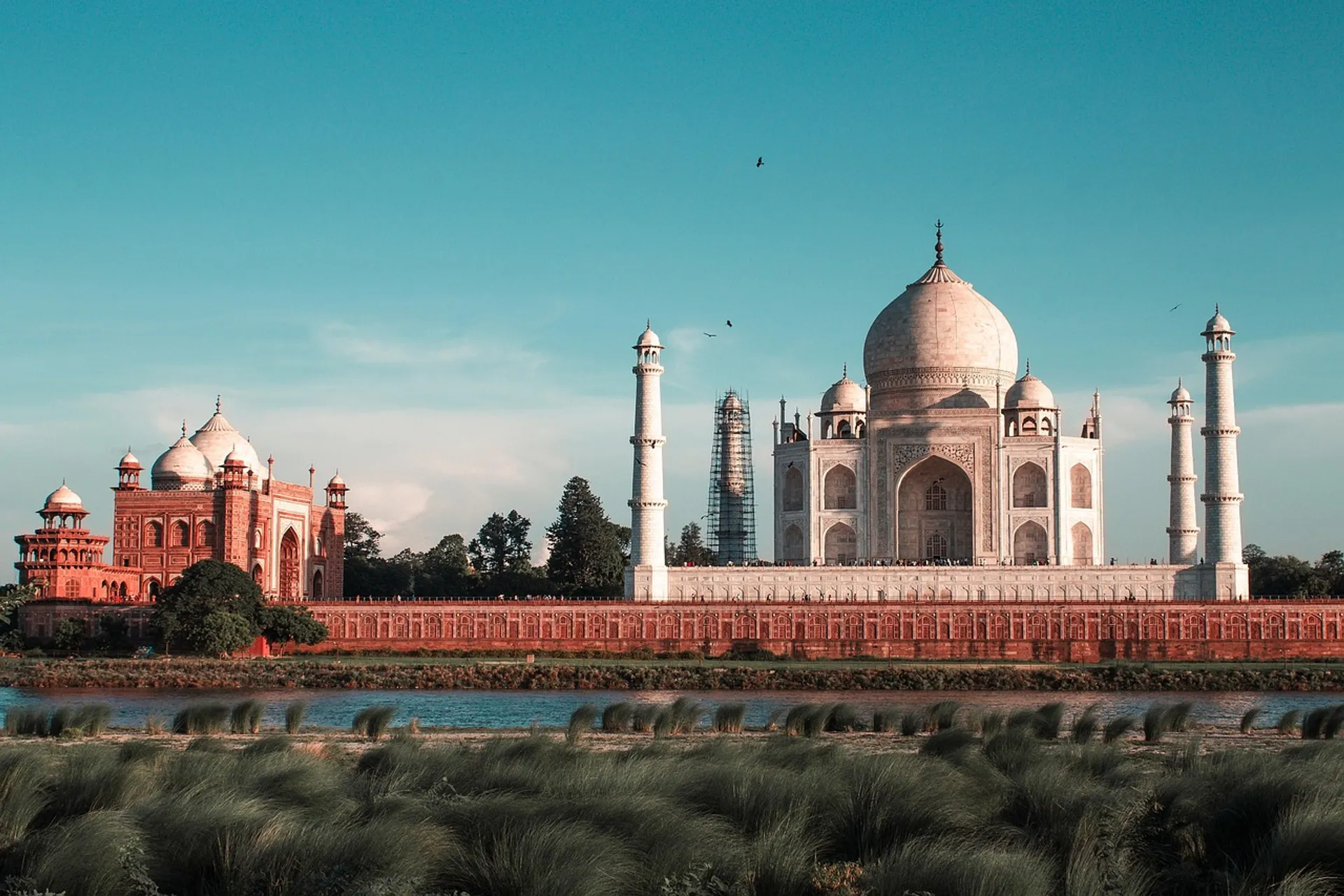
India Tourist e-Visa: Your Gateway to an Unforgettable Journey
India, with its vibrant culture, historic landmarks, and breathtaking landscapes, is a top destination for travelers. If you’re planning a trip, securing your India Tourist e-Visa is the first step. This guide covers everything from visa types and eligibility to FAQs and insider tips to ensure a smooth application process.
Types of India Tourist Visas
Choose the right visa based on your travel plans:
1. Single Entry Tourist e-Visa
- Validity: 30 days from issue date.
- Stay Duration: Up to 30 days per entry.
- Best For: Short trips or one-time visits.
- Processing Time: 3–5 business days.
2. Multiple Entry Tourist e-Visa
- Validity: 365 days from issue date.
- Stay Duration: Up to 180 days per entry.
- Best For: Frequent travelers or long-term stays.
- Processing Time: 3–5 business days.
Is Your Country Eligible for an India e-Visa?
India’s e-Visa system simplifies entry for travelers from 166+ countries, categorized into:
e-Visa Eligible
Below is the full list of countries eligible for India’s e-Visa:
A: Albania, Andorra, Angola, Antigua and Barbuda, Argentina, Armenia, Australia, Austria, Azerbaijan
B: Bahamas, Bahrain, Barbados, Belarus, Belgium, Belize, Benin, Bolivia, Bosnia and Herzegovina, Botswana, Brazil
C: Cambodia, Cameroon, Canada, Cape Verde Islands, Chad, Chile, China, Colombia, Comoro Islands, Costa Rica, Cote d'Ivoire, Croatia, Cuba, Cyprus, Czechia
D: Denmark, Djibouti, Dominica, Dominican Republic
E: Ecuador, El Salvador, Equatorial Guinea, Eritrea, Estonia, eSwatini
F: Fiji, Finland, France
G: Gabon, Georgia, Germany, Ghana, Greece, Grenada, Guatemala, Guinea, Guyana
H: Haiti, Honduras, Hong Kong (SAR China), Hungary
I: Iceland, Indonesia, Ireland, Israel, Italy
J: Jamaica, Japan, Jordan
K: Kazakhstan, Kenya, Kiribati, Kyrgyzstan
L: Laos, Latvia, Lesotho, Liberia, Liechtenstein, Lithuania, Luxembourg
M: Macao (SAR China), Madagascar, Malawi, Malaysia, Mali, Malta, Marshall Islands, Mauritius, Mexico, Micronesia, Moldova, Monaco, Mongolia, Montenegro, Morocco, Mozambique, Myanmar
N: Namibia, Nauru, Netherlands, New Zealand, Nicaragua, Niger, North Macedonia, Norway
O: Oman
P: Palau Islands, Palestinian Territory, Panama, Papua New Guinea, Paraguay, Peru, Philippines, Poland, Portugal
Q: Qatar
R: Romania, Russian Federation, Rwanda
S: Samoa, San Marino, Saudi Arabia, Senegal, Serbia, Seychelles, Sierra Leone, Singapore, Slovakia, Slovenia, Solomon Islands, South Africa, South Korea, Spain, Sri Lanka, St. Kitts and Nevis, St. Lucia, St. Vincent and the Grenadines, Suriname, Sweden, Switzerland
T: Taiwan (Chinese Taipei), Tajikistan, Tanzania, Thailand, The Gambia, Timor-Leste, Togo, Tonga, Trinidad and Tobago, Tuvalu
U: Uganda, Ukraine, United Arab Emirates, United Kingdom, United States, Uruguay, Uzbekistan
V: Vanuatu, Vatican City, Venezuela, Vietnam
Z: Zambia, Zimbabwe
Important Notes:
- Citizens of Argentina, Fiji, Indonesia, Jamaica, Malaysia, Thailand, and 17+ other nations pay $0 visa fees.
- Japan, UAE, and South Korea can also apply for a Visa on Arrival (VOA).
Sticker Visa Required
Citizens of these countries must apply for a sticker visa via an embassy:
A: Afghanistan, Algeria
B: Bangladesh, Burkina Faso
C: Central African Republic, China, Congo (Dem. Rep.), Congo (Rep.)
E: Egypt, Ethiopia
G: Guinea-Bissau
H: Hong Kong (SAR China)
I: Iran, Iraq
K: Kosovo, Kuwait
L: Lebanon, Libya
M: Macao (SAR China), Mauritania
N: Nigeria, North Korea
P: Pakistan
S: Sao Tome and Principe, Somalia, South Sudan, Sudan, Syria
T: Tunisia, Türkiye, Turkmenistan
Y: Yemen
Visa-Free Entry
Only nationals of these countries enjoy visa-free travel to India:
- Bhutan
- Maldives
- Nepal
Step-by-Step Application Process
Applying for an India e-Visa is quick and straightforward:
- Create an Account: Visit Visa Centre AU’s portal.
- Fill the Form: Provide personal, passport, and travel details.
- Upload Documents: Passport copy, photo, and flight itinerary (if available).
- Pay Fees: Secure payment via credit/debit card.
- Track & Receive: Get real-time updates and download your e-Visa upon approval.
Processing Time: 3–5 days for e-Visas; sticker visas may take weeks.
Essential Documents Checklist
- Valid passport (6+ months validity from departure date).
- Digital passport-sized photo (white background, no filters).
- Flight itinerary (round-trip recommended).
- Proof of accommodation (hotel booking or host invitation).
Tips for a Successful Visa Application
- ✅ Apply 1–2 months before travel for sticker visas.
- ✅ Double-check passport details match your application.
- ✅ Keep a printed copy of your e-Visa for immigration checks.
- ✅ Avoid overstaying—penalties range from $300 fines to 5-year bans.
Why Choose Visa Centre AU?
- 24/7 Support: Get assistance anytime during your application.
- Group Discounts: Apply with family/friends and save.
- Real-Time Tracking: Monitor your visa status via app or portal.
Ready to Explore India?
Don’t let visa hassles delay your adventure. Apply for Your India e-Visa Now with Visa Centre AU and embark on your journey stress-free!

India Tourist Visa: An Essential Guide for Travellers
India, a nation of unparalleled cultural heritage, breathtaking landscapes, and vibrant traditions, draws millions of travellers each year. For nearly all foreign nationals, a valid visa is a mandatory prerequisite for entry into the country. The only notable exceptions are citizens of Nepal and Bhutan, who are permitted entry under specific, limited circumstances. A successful journey to India hinges on a correctly processed visa, which is the foundational step for any travel itinerary. Understanding the distinct pathways available for obtaining a visa is paramount to ensuring a seamless and stress-free experience.
Understanding the India Tourist Visa: e-Visa vs. Regular Visa
The Government of India provides two primary channels for foreign nationals to obtain a tourist visa: the e-Visa, which functions as an Electronic Travel Authorisation (ETA), and the traditional, or "Regular," Visa. While both serve the same ultimate purpose, their application processes, requirements, and management are entirely separate. The e-Visa is processed through a completely online system, managed directly by the Ministry of Home Affairs in New Delhi. In contrast, the regular visa application is handled by official outsourcing service providers, most notably VFS Global, which works in conjunction with Indian Embassies and Consulates abroad.
The distinction between these two systems is not a matter of choice but a crucial operational division. Consular offices, whether in Chicago, Washington D.C., or Paris, explicitly state that they do not process e-visas and that all enquiries for them must be directed to the dedicated e-visa portal. This operational split is a deliberate strategic measure by the Government of India. The e-visa system is designed to handle high-volume, low-complexity applications for purposes such as tourism and casual business, using a centralised, automated framework. This allows Indian diplomatic missions and their outsourcing partners to focus on more complex, in-person applications that may require biometrics and a more thorough review, such as student or employment visas. Failing to understand this fundamental separation can lead to significant delays or even application rejection. For example, a traveller attempting to get an e-visa-related question answered at a VFS Global centre will find the staff unable to assist, as the centres have no administrative or technical connection to the e-visa portal. This highlights the importance of choosing the correct application channel from the very beginning.
The Digital Journey: A Step-by-Step Guide to the India E-Visa
The e-Visa system offers a compelling advantage for eligible travellers due to its convenience and speed. The entire process is conducted online, eliminating the need for in-person visits to an embassy or visa application centre. This has revolutionised how travellers prepare for their trips, allowing them to apply for travel authorisation from the comfort of their homes at any time of day.
Official India Visa Portal
A critical point of awareness for all applicants is the existence of only one authorised website for the India e-visa: https://indianvisaonline.gov.in/evisa/tvoa.html. Official government sources consistently and emphatically warn travellers against using any other fraudulent websites that may appear to represent the Government of India. These unofficial sites often mimic the official portal, but can charge exorbitant fees, provide inaccurate information, and potentially compromise personal data. The traveller who unknowingly uses one of these sites risks not only financial loss from inflated charges but also the rejection of their application due to a flawed process, losing valuable time and effort. The prevalence of these scam sites necessitates extreme caution and underscores the importance of verifying the URL before beginning any application.
Step-by-Step Application Process: From Form to Final ETA
The application process itself is a meticulous, form-based journey. Applicants are required to provide a wide range of personal information, including their full name, date of birth, town and country of birth, religion, educational qualifications, and any visible identification marks. The application also requires detailed passport information, contact and address details, and family history, including the names and nationalities of parents. A particularly sensitive question concerns whether a grandparent was ever a Pakistani national. Applicants must also provide their travel details, including the expected date of arrival, the port of entry, and a list of countries visited in the past ten years.
Document and Photo Specifications
The fate of an e-visa application largely depends on the accuracy of the information provided and the quality of the uploaded documents. Two mandatory documents must be uploaded: a recent passport-style photo and a scanned copy of the passport's identification page. The specifications for these are non-negotiable and a common reason for application rejection.
- Digital Photograph: The photo must be a recent, full-face, frontal view of the applicant against a plain white background. It should be in JPEG format, with dimensions and file size strictly adhering to the specified range (minimum 10 KB, maximum 300 KB). The photo must not feature glasses, shadows on the face or background, or any borders.
- Passport: The passport's ID page, showing personal details, must be scanned and uploaded as a PDF file. The passport must be valid for at least six months from the date of arrival in India and must have at least two blank pages for immigration stamps.
e-Visa Types and Processing Times
The e-visa facility is available for several sub-categories, including e-Tourist, e-Business, e-Medical, and e-Conference visas. The e-Tourist visa offers different validities: a 30-day visa (with a double-entry allowance), a one-year visa, and a five-year visa (both with multiple-entry privileges).
Applicants can apply online at least four days in advance of their date of arrival, with a 120-day window for applying for one- or five-year visas. While applications can sometimes be processed in as little as 24 to 48 hours, it is prudent to allow at least a week for processing to account for any unexpected delays. A key point of confusion for the 30-day visa is that its validity period begins from the date of visa issuance, not the date of arrival. Therefore, a traveller who applies too early or experiences a flight delay could arrive with a visa that has already expired.
India Tourist Visa Costs: A Transparent Look at Visa Fees
The total cost of an Indian visa is a multi-component fee structure that goes beyond the single visa fee set by the Government of India. The overall expense is a sum of the government's visa fee, the Indian Community Welfare Fund (ICWF) charge, VFS Global's mandatory service fees, and any optional, value-added services selected by the applicant.
India E-Visa Fees by Validity and Season
The e-visa fee structure is tiered and varies based on the visa validity and the season of travel. The payment is processed online, with an additional 2.5% bank transaction charge. These fees are for the processing of the application and are non-refundable, regardless of whether the visa is granted or rejected.
| Visa Validity | Fee (USD) |
| 30-day e-Tourist Visa (April to June) | $10.00 |
| 30-day e-Tourist Visa (July to March) | $25.00 |
| One-year e-Tourist Visa | $40.00 |
| Five-year e-Tourist Visa | $80.00 |
Regular Visa Fees: A Snapshot by Nationality
The cost for a regular visa varies significantly by the applicant's nationality. In addition to the government-mandated visa fees, a VFS service charge is levied, which can be a significant, mandatory portion of the total cost. The mandatory nature of this fee, as confirmed by outsourcing agencies handling visa applications for other countries, means it cannot be waived or avoided. A traveller who only accounts for the government's fee will encounter a higher-than-expected total cost when it is time to pay.
For example, a US national applying for a regular tourist visa valid for up to 10 years would pay a visa fee of $95 plus a $3 ICWF fee, along with additional VFS service charges and other optional fees.
Visa Categories by Country
Most foreign nationals require a visa to enter India. However, the type of visa and the application process can differ significantly based on nationality and travel purpose. Here is a breakdown of the requirements for different categories of travellers.
Nationals that receive Visa on Arrival (VoA) while travelling to India
A genuine Visa on Arrival facility is available exclusively to nationals of a select few countries under specific bilateral agreements. This facility is provided at only six designated international airports: Bangalore, Chennai, Delhi, Hyderabad, Kolkata, and Mumbai. For nationals of these countries, the VoA is a double-entry visa valid for up to 60 days.
- Japan
- South Korea
- United Arab Emirates
E-Visa (Electronic Travel Authorisation)
The e-visa is a pre-approved Electronic Travel Authorisation that must be secured before a traveller embarks on their journey. It is available to citizens of a large number of countries, including but not limited to:
- Albania, Andorra, Angola, Anguilla, Antigua & Barbuda, Argentina, Armenia, Aruba, Australia, Austria, Azerbaijan
- Bahamas, Barbados, Belarus, Belgium, Belize, Benin, Bolivia, Bosnia & Herzegovina, Botswana, Brazil, Brunei, Bulgaria, Burundi
- Cambodia, Canada, Cape Verde, Cayman Island, Chile, China, Colombia, Comoros, Cook Islands, Costa Rica, Côte d’Ivoire, Croatia, Cuba, Cyprus, Czech Republic
- Denmark, Djibouti, Dominica, Dominican Republic
- Ecuador, El Salvador, Eritrea, Estonia
- Fiji, Finland, France
- Gabon, Gambia, Georgia, Germany, Ghana, Greece, Grenada, Guatemala, Guinea, Guyana
- Haiti, Honduras, Hungary
- Iceland, Indonesia, Iran, Ireland, Israel, Italy
- Jamaica, Japan, Jordan
- Kazakhstan, Kenya, Kiribati, Kyrgyzstan, Laos, Latvia, Lesotho, Liberia, Liechtenstein, Lithuania, Luxembourg
- Macau, Madagascar, Malawi, Malaysia, Maldives, Mali, Malta, Marshall Islands, Mauritius, Mexico, Micronesia, Moldova, Monaco, Mongolia, Montenegro, Montserrat, Mozambique, Myanmar
- Namibia, Nauru, Nepal, Netherlands, New Zealand, Nicaragua, Niger, Niue Island, Norway
- Oman
- Palestine, Panama, Papua New Guinea, Paraguay, Peru, Philippines, Poland, Portugal
- Qatar
- Republic of Korea (South Korea), Republic of Macedonia, Romania, Russia, Rwanda
- Saint Christopher and Nevis, Saint Lucia, Saint Vincent and the Grenadines, Samoa, San Marino, Saudi Arabia, Senegal, Serbia, Seychelles, Sierra Leone, Singapore, Slovakia, Slovenia, Solomon Islands, South Africa, Spain, Sri Lanka, Suriname, Swaziland, Sweden, Switzerland
- Taiwan, Tajikistan, Tanzania, Thailand, Togo, Tonga, Trinidad and Tobago, Turks and Caicos Island, Tuvalu
- UAE, Uganda, Ukraine, United Kingdom, Uruguay, USA, Uzbekistan
- Vanuatu, Vatican City-Holy See, Venezuela, Vietnam
- Zambia, Zimbabwe
Regular Visa
All other foreign nationals not covered by the above categories must apply for a regular visa through the traditional channel at an Indian embassy or consulate. This is also the mandatory route for those of Pakistani origin or those holding a Pakistani passport, regardless of their current nationality. Nationals of Afghanistan, China, Iraq, and Sudan are also required to maintain a gap of at least two months between two tourist visa visits.
Avoiding the Pitfalls: Common Mistakes and Insider Tips
Navigating the visa application process, whether digital or traditional, requires attention to detail. Several common mistakes can lead to delays or outright rejection. Awareness of these pitfalls is the first step to a successful application.
- Using Unofficial Websites: As mentioned, the most significant risk is falling prey to fraudulent websites. These sites not only charge extra fees but can also misuse personal data. The only safe and correct path is to use the official Indian government portal.
- Inaccurate or Incomplete Information: Minor discrepancies between the application form and passport details, such as a misspelled name or incorrect date of birth, can result in the application being denied. This is why meticulous verification of all entered data is essential before submission.
- Disregarding Document and Photo Specifications: Applicants often fail to follow the strict requirements for photographs (e.g., incorrect background colour, wearing glasses) and document formats (e.g., wrong file type or size). An application with non-conforming photos or documents is likely to be rejected.
- Not Allowing Sufficient Time: While e-visas are processed quickly, delays are always possible. Applying too close to the travel date is a gamble that can lead to a cancelled trip. It is advisable to apply with a buffer of at least a few weeks.
- Misunderstanding Visa Validity: A 30-day e-visa's validity period begins from the date of issuance, not the date of entry. A traveller should apply with a buffer to ensure the visa is valid for the entirety of their intended stay, especially for a short-term visa.
How MyVisitVisa Can Help
The visa application process, while simplified by the e-visa system, can still be complex and daunting for many travellers. Navigating the correct application type, gathering the right documents, and avoiding common errors can be a source of significant stress. Professional visa facilitation services offer a valuable solution by streamlining the process and providing expert guidance. These services act as a trusted intermediary, offering clarity and assistance every step of the way.
MyVisitVisa positions itself as a comprehensive travel partner by addressing the specific challenges travellers face. Its services are designed to eliminate confusion, reduce the risk of rejection, and save valuable time and effort. The table below illustrates how MyVisitVisa can mitigate common problems associated with the India visa application process.
| Problem | How MyVisitVisa Can Help |
| Confusion over Visa Type | Expert consultation to identify the correct visa for a specific trip (e-Visa vs. Regular Visa) and guidance on when a traditional visa is necessary. |
| Risk of Fraudulent Websites | Provides direct, secure access to the official Indian government application portal, protecting applicants from scams and data theft. |
| Inaccurate or Incomplete Application Forms | Offers form-filling assistance and a meticulous document review service to ensure all information is accurate and complete before submission. |
| Non-conforming Photos and Documents | Provides professional review of all documents and photos, ensuring they meet the exacting standards for file format, size, and quality. |
| Delays and Uncertainty | Offers application tracking and real-time updates on the status of a visa, providing peace of mind and eliminating guesswork. |
| Hassle of Physical Appointment/Collection | Facilitates courier services for the return of passports and documents, eliminating the need for a second trip to a VFS centre. |
| General Questions and Concerns | A dedicated customer support team is available to address questions and resolve issues, serving as a single point of contact throughout the process. |
By providing these services, MyVisitVisa ensures that the visa application journey is not just a necessary formality but a smooth and reliable process.
Frequently Asked Questions (FAQ)
Application & Documents
Q: Do I need a visa to go to India?
A: Yes, almost all foreign nationals require a valid visa to enter India, with very limited exceptions for citizens of Nepal and Bhutan under specific conditions.
Q: Can I use an old passport if my visa is on it?
A: Yes, travellers can enter India on a new passport even if their e-visa was granted on an old one. However, they must carry both the old and new passports during travel.
Q: Are dual passport holders eligible for e-visa?
A: If a traveller holds dual citizenship, they can use both passports to complete the application. However, individuals of Pakistani origin or those holding a Pakistani passport are not eligible for the e-visa and must apply for a regular visa at an Indian Mission.
Fees & Payments
Q: Are visa fees refundable?
A: No, visa fees are generally non-refundable. The fee is for the processing of the application and is not contingent on the grant or rejection of the visa. VFS Global service fees and optional service fees are also non-refundable once paid.
Q: What are the bank transaction charges for e-visa?
A: An additional bank transaction charge of 2.5% is applied to the applicable e-visa fee.
Processing & Post-Approval
Q: How long does the e-visa take to process?
A: The processing time is typically a few days, though it can be as fast as 24 to 48 hours. Applicants must apply at least four days before their arrival date.
Q: How can I check the status of my application?
A: Applicants can track the status of their application online using the reference number provided on the payment receipt. The final status must show as 'GRANTED' before commencing the journey.
Q: What if my e-visa is rejected?
A: If an e-visa application is rejected, the fee is non-refundable. The applicant would then need to consider applying for a regular visa through the traditional channel.
Common Mistakes & How to Avoid Them
Q: What are the most common reasons for an application to be rejected?
A: A common pitfall is using unofficial websites that mimic the official government portal. These can charge extra fees and may provide incorrect information. Another frequent issue is supplying inaccurate or incomplete information on the form, as minor discrepancies can lead to denial. Also, failing to adhere to strict document and photo specifications, such as the correct background colour or file size, can cause an application to be rejected.
Q: I have a 30-day e-visa. When does its validity begin?
A: The validity period of the 30-day e-visa begins from the date it is issued, not your date of arrival in India. It is crucial to allow a buffer when applying to ensure the visa is valid for the entirety of your trip.
How MyVisitVisa Can Help
Q: How does MyVisitVisa simplify the application process?
A: MyVisitVisa helps to demystify the entire visa application process. Our service provides expert consultation to help you identify the correct visa type for your trip. We also offer a meticulous document review service to ensure all your information is accurate and your photos and documents meet the required standards, reducing the risk of rejection.
Q: Can MyVisitVisa help with the hassle of physical appointments?
A: Yes, we facilitate courier services for the return of your passport and documents, eliminating the need for a second trip to a VFS centre. Our application tracking service also provides real-time updates on the status of your visa, offering you peace of mind throughout the process.
Special Cases
Q: What are the requirements for a minor's visa?
A: For a minor, an application must include photocopies of both parents' passports and driver's licences, as well as a copy of the minor's birth certificate. Every individual, including minors, must have a separate passport.
Q: What if I was a former Indian national?
A: Former Indian nationals must provide proof of renunciation of their Indian citizenship, such as a Certificate of Renunciation. This is a mandatory requirement for all visa applications.
Q: Can my family apply as a group?
A: For regular visas, if applying as a family or group, individual appointments must be booked for each member at the Visa Application Centre. For e-visas, each individual must apply with a separate passport.
Conclusion: Your Adventure Awaits
Securing a visa to India is a critical yet manageable step on the path to an unforgettable adventure. By understanding the key differences between the e-visa and regular visa pathways, and by being aware of the common pitfalls, travellers can approach the process with confidence. With the right guidance, the complexities of application forms, fees, and documentation can be navigated seamlessly, leaving more time and energy to anticipate the incredible experiences that await in India.

India Tourist e-Visa: Your Gateway to an Unforgettable Journey
India, with its vibrant culture, historic landmarks, and breathtaking landscapes, is a top destination for travelers. If you’re planning a trip, securing your India Tourist e-Visa is the first step. This guide covers everything from visa types and eligibility to FAQs and insider tips to ensure a smooth application process.
Types of India Tourist Visas
Choose the right visa based on your travel plans:
1. Single Entry Tourist e-Visa
- Validity: 30 days from issue date.
- Stay Duration: Up to 30 days per entry.
- Best For: Short trips or one-time visits.
- Processing Time: 3–5 business days.
2. Multiple Entry Tourist e-Visa
- Validity: 365 days from issue date.
- Stay Duration: Up to 180 days per entry.
- Best For: Frequent travelers or long-term stays.
- Processing Time: 3–5 business days.
Is Your Country Eligible for an India e-Visa?
India’s e-Visa system simplifies entry for travelers from 166+ countries, categorized into:
e-Visa Eligible
Below is the full list of countries eligible for India’s e-Visa:
A: Albania, Andorra, Angola, Antigua and Barbuda, Argentina, Armenia, Australia, Austria, Azerbaijan
B: Bahamas, Bahrain, Barbados, Belarus, Belgium, Belize, Benin, Bolivia, Bosnia and Herzegovina, Botswana, Brazil
C: Cambodia, Cameroon, Canada, Cape Verde Islands, Chad, Chile, China, Colombia, Comoro Islands, Costa Rica, Cote d'Ivoire, Croatia, Cuba, Cyprus, Czechia
D: Denmark, Djibouti, Dominica, Dominican Republic
E: Ecuador, El Salvador, Equatorial Guinea, Eritrea, Estonia, eSwatini
F: Fiji, Finland, France
G: Gabon, Georgia, Germany, Ghana, Greece, Grenada, Guatemala, Guinea, Guyana
H: Haiti, Honduras, Hong Kong (SAR China), Hungary
I: Iceland, Indonesia, Ireland, Israel, Italy
J: Jamaica, Japan, Jordan
K: Kazakhstan, Kenya, Kiribati, Kyrgyzstan
L: Laos, Latvia, Lesotho, Liberia, Liechtenstein, Lithuania, Luxembourg
M: Macao (SAR China), Madagascar, Malawi, Malaysia, Mali, Malta, Marshall Islands, Mauritius, Mexico, Micronesia, Moldova, Monaco, Mongolia, Montenegro, Morocco, Mozambique, Myanmar
N: Namibia, Nauru, Netherlands, New Zealand, Nicaragua, Niger, North Macedonia, Norway
O: Oman
P: Palau Islands, Palestinian Territory, Panama, Papua New Guinea, Paraguay, Peru, Philippines, Poland, Portugal
Q: Qatar
R: Romania, Russian Federation, Rwanda
S: Samoa, San Marino, Saudi Arabia, Senegal, Serbia, Seychelles, Sierra Leone, Singapore, Slovakia, Slovenia, Solomon Islands, South Africa, South Korea, Spain, Sri Lanka, St. Kitts and Nevis, St. Lucia, St. Vincent and the Grenadines, Suriname, Sweden, Switzerland
T: Taiwan (Chinese Taipei), Tajikistan, Tanzania, Thailand, The Gambia, Timor-Leste, Togo, Tonga, Trinidad and Tobago, Tuvalu
U: Uganda, Ukraine, United Arab Emirates, United Kingdom, United States, Uruguay, Uzbekistan
V: Vanuatu, Vatican City, Venezuela, Vietnam
Z: Zambia, Zimbabwe
Important Notes:
- Citizens of Argentina, Fiji, Indonesia, Jamaica, Malaysia, Thailand, and 17+ other nations pay $0 visa fees.
- Japan, UAE, and South Korea can also apply for a Visa on Arrival (VOA).
Sticker Visa Required
Citizens of these countries must apply for a sticker visa via an embassy:
A: Afghanistan, Algeria
B: Bangladesh, Burkina Faso
C: Central African Republic, China, Congo (Dem. Rep.), Congo (Rep.)
E: Egypt, Ethiopia
G: Guinea-Bissau
H: Hong Kong (SAR China)
I: Iran, Iraq
K: Kosovo, Kuwait
L: Lebanon, Libya
M: Macao (SAR China), Mauritania
N: Nigeria, North Korea
P: Pakistan
S: Sao Tome and Principe, Somalia, South Sudan, Sudan, Syria
T: Tunisia, Türkiye, Turkmenistan
Y: Yemen
Visa-Free Entry
Only nationals of these countries enjoy visa-free travel to India:
- Bhutan
- Maldives
- Nepal
Step-by-Step Application Process
Applying for an India e-Visa is quick and straightforward:
- Create an Account: Visit Visa Centre AU’s portal.
- Fill the Form: Provide personal, passport, and travel details.
- Upload Documents: Passport copy, photo, and flight itinerary (if available).
- Pay Fees: Secure payment via credit/debit card.
- Track & Receive: Get real-time updates and download your e-Visa upon approval.
Processing Time: 3–5 days for e-Visas; sticker visas may take weeks.
Essential Documents Checklist
- Valid passport (6+ months validity from departure date).
- Digital passport-sized photo (white background, no filters).
- Flight itinerary (round-trip recommended).
- Proof of accommodation (hotel booking or host invitation).
Tips for a Successful Visa Application
- ✅ Apply 1–2 months before travel for sticker visas.
- ✅ Double-check passport details match your application.
- ✅ Keep a printed copy of your e-Visa for immigration checks.
- ✅ Avoid overstaying—penalties range from $300 fines to 5-year bans.
Why Choose Visa Centre AU?
- 24/7 Support: Get assistance anytime during your application.
- Group Discounts: Apply with family/friends and save.
- Real-Time Tracking: Monitor your visa status via app or portal.
Ready to Explore India?
Don’t let visa hassles delay your adventure. Apply for Your India e-Visa Now with Visa Centre AU and embark on your journey stress-free!